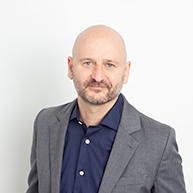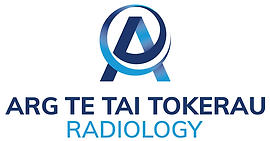Northland > Private Hospitals & Specialists >
ARG Te Tai Tokerau Radiology
Private Service, Radiology
Today
Description
Our local radiologists provide accurate, high quality and timely diagnostic reports and are proud to be serving the Northland community.
We offer a wide range of imaging services and have subspecialist expertise** in an extensive range of areas including neuroradiology, body imaging, women’s health, paediatric imaging, vascular imaging, orthopaedic sports diagnostics and general radiology.
Services available: PET-CT, MRI, Ultrasound, CT, X-ray.
- diagnose disease states, such as cancer or heart disease
- show the extent of injury to body structures
- to aid in interventional procedures, such as angiography.
- Medical Imaging Technologists (MITs) or Radiographers perform your X-ray and barium examinations.
- Sonographers are MITs who perform your ultrasound examinations.
- Radiologists are specialist doctors who read and understand your films. They will also be involved if you have an intravenous urogram (IVU), barium study, biopsy and a number of other ultrasound procedures. They interpret the results of the images and send them to your doctor.
Consultants
-

Dr Jash Agraval
Radiologist
-

Dr Richard Beedie
Radiologist
-

Dr Sarah Benson-Cooper
Radiologist
-

Dr Stephen Bepko
Radiologist
-

Dr Rebecca Biggs
Radiologist
-

Dr Barnaby Clark
Radiologist
-

Dr Brigid Connor
Radiologist
-

Dr Daniel Cookson
Radiologist
-

Dr Nicholas Dodd
Radiologist
-

Dr David Dow
Radiologist
-

Dr Francois du Toit
Radiologist
-

Dr George Foote
Radiologist
-

Dr Christabel Logan
Radiologist
-

Dr Damien Hoon
Radiologist
-

Dr Bonnie Leung
Radiologist
-

Dr Glen Lightbody
Radiologist
-

Dr Chris McKee
Radiologist
-

Dr Stephen Merrilees
Radiologist
-

Dr Rhian Miranda
Radiologist
-

Dr Robert Mitchell
Radiologist
-

Dr Helen Moore
Radiologist
-

Dr Vicki Morganti
Radiologist
-

Dr Kate O'Connor
Radiologist
-

Dr Brendon O'Donoghue
Radiologist
-

Dr Kirsten Pearce
Radiologist
-

Dr Jane Peart
Radiologist
-

Dr David Perry
Radiologist
-

Dr Robert Sim
Radiologist
-

Dr Simran Singh
Radiologist
-

Dr Andrew Smith
Radiologist
-

Dr Neal Stewart
Radiologist
-

Dr Amy Stringer
Radiologist
-

Dr Lara Sweetman
Radiologist
-

Dr Penelope Symes
Radiologist
-

Dr Glen Thomson
Radiologist
-

Dr Yun-Jung Jack Tsai
Radiologist
-

Dr Stephen Wood
Radiologist
-

Dr Rebecca Woodward
Radiologist
Ages
Child / Tamariki, Youth / Rangatahi, Adult / Pakeke, Older adult / Kaumātua
How do I access this service?
Referral Expectations
For referrers: click here for referral forms and to access the IntelePACS portal.
Fees and Charges Categorisation
Fees apply
Fees and Charges Description
We are a Southern Cross Affiliated Provider. Please talk to our Bookings Team (09 955 9950) to find out if your exam is covered.
Hours
| Mon – Fri | 8:00 AM – 5:00 PM |
|---|
Languages Spoken
English
Procedures / Treatments
Using a strong magnetic field and radio waves, the MRI machine looks in detail at specific parts of the body, including soft tissue, bone, fat, muscles and internal organs. The imaging it produces is very detailed, which can help your radiologist make an accurate diagnosis. MRI is considered to be very safe. It doesn’t use x-ray and is painless. What to expect on the day of your scan? When you arrive, please check in with reception. We’ll make sure your details are correct and give you two forms to complete. You will be given a gown to change into and asked to remove most of your clothing, including glasses, jewellery, watch, hearing aids and hairpins. You’ll lie on a comfortable table, where we’ll position you correctly for your scan. Sometimes you might also have an antenna (often referred to as a coil) positioned on your body, which shows the machine where to focus. Once you’re all set, the MIT will move into another room – you can talk to them at any time over the intercom. You’ll then slowly slide into the scanner. It might feel a little daunting at first, but remember that MRI is safe, and we’ll be on hand to make the experience as pleasant as possible. We can play your favourite music in the scanner, and fans keep the air fresh and breezy. There’s also a button you can push to stop the whole thing – you’re in full control. During the test, the MIT will take a number of images from all different angles, so it’s important to stay as still as possible – this will help make sure your images come out clear, so our radiologists can properly interpret them. As the machine takes images, you’ll hear loud knocking noises – this is totally normal and hearing protection will be provided to you. Depending on your scan, you may be asked to hold your breath. You may also be injected with a dye, called a contrast medium, which makes scans easier to read. This dye has been used in medicine for many years; it’s very safe and you won’t have any after-effects from it. The scan time will vary depending on the type of examination required, but as a rule it will take around 30 minutes.
Using a strong magnetic field and radio waves, the MRI machine looks in detail at specific parts of the body, including soft tissue, bone, fat, muscles and internal organs. The imaging it produces is very detailed, which can help your radiologist make an accurate diagnosis. MRI is considered to be very safe. It doesn’t use x-ray and is painless. What to expect on the day of your scan? When you arrive, please check in with reception. We’ll make sure your details are correct and give you two forms to complete. You will be given a gown to change into and asked to remove most of your clothing, including glasses, jewellery, watch, hearing aids and hairpins. You’ll lie on a comfortable table, where we’ll position you correctly for your scan. Sometimes you might also have an antenna (often referred to as a coil) positioned on your body, which shows the machine where to focus. Once you’re all set, the MIT will move into another room – you can talk to them at any time over the intercom. You’ll then slowly slide into the scanner. It might feel a little daunting at first, but remember that MRI is safe, and we’ll be on hand to make the experience as pleasant as possible. We can play your favourite music in the scanner, and fans keep the air fresh and breezy. There’s also a button you can push to stop the whole thing – you’re in full control. During the test, the MIT will take a number of images from all different angles, so it’s important to stay as still as possible – this will help make sure your images come out clear, so our radiologists can properly interpret them. As the machine takes images, you’ll hear loud knocking noises – this is totally normal and hearing protection will be provided to you. Depending on your scan, you may be asked to hold your breath. You may also be injected with a dye, called a contrast medium, which makes scans easier to read. This dye has been used in medicine for many years; it’s very safe and you won’t have any after-effects from it. The scan time will vary depending on the type of examination required, but as a rule it will take around 30 minutes.
Using a strong magnetic field and radio waves, the MRI machine looks in detail at specific parts of the body, including soft tissue, bone, fat, muscles and internal organs. The imaging it produces is very detailed, which can help your radiologist make an accurate diagnosis. MRI is considered to be very safe. It doesn’t use x-ray and is painless.
What to expect on the day of your scan?
When you arrive, please check in with reception. We’ll make sure your details are correct and give you two forms to complete. You will be given a gown to change into and asked to remove most of your clothing, including glasses, jewellery, watch, hearing aids and hairpins. You’ll lie on a comfortable table, where we’ll position you correctly for your scan. Sometimes you might also have an antenna (often referred to as a coil) positioned on your body, which shows the machine where to focus.
Once you’re all set, the MIT will move into another room – you can talk to them at any time over the intercom. You’ll then slowly slide into the scanner. It might feel a little daunting at first, but remember that MRI is safe, and we’ll be on hand to make the experience as pleasant as possible. We can play your favourite music in the scanner, and fans keep the air fresh and breezy. There’s also a button you can push to stop the whole thing – you’re in full control.
During the test, the MIT will take a number of images from all different angles, so it’s important to stay as still as possible – this will help make sure your images come out clear, so our radiologists can properly interpret them. As the machine takes images, you’ll hear loud knocking noises – this is totally normal and hearing protection will be provided to you. Depending on your scan, you may be asked to hold your breath. You may also be injected with a dye, called a contrast medium, which makes scans easier to read. This dye has been used in medicine for many years; it’s very safe and you won’t have any after-effects from it.
The scan time will vary depending on the type of examination required, but as a rule it will take around 30 minutes.
An ultrasound uses high frequency sound waves that bounce off body tissue. These waves create echoes, which are recorded and displayed in real time on a monitor. These are used for obstetric images during a pregnancy, as well as for scanning a wide range of body parts and conditions. Ultrasound doesn’t use radiation and is considered completely safe for children and during pregnancy. What to expect on the day of your appointment? When you arrive, please check in with reception. We’ll check your details and make sure they are correct. The skilled sonographer performing the examination will ask you questions about your scan, listen to you and make you feel comfortable. The procedure will be explained in detail and the sonographer will answer any questions you have before starting the examination. Depending on your scan, you may be asked to remove most of your clothing and then change into a gown – this makes things easier and will be more comfortable for you. Scans typically last between 30 and 45 minutes. There are two main types of scans: External ultrasound - where the probe is moved over your skin. This is most common for pregnancy, muscles, liver, kidney and other internal organs, and uses a water-based gel to help the probe glide. Internal ultrasound - where the probe is inserted into the body. You’ll either lie on your back or as instructed by your sonographer. The small probe is inserted gently into the vagina or rectum. This may be slightly uncomfortable, but not painful. NB: We understand that an internal ultrasound can be a personally invasive procedure, so you are welcome to request a female sonographer to perform this scan. Please make this known at the time of booking your appointment.
An ultrasound uses high frequency sound waves that bounce off body tissue. These waves create echoes, which are recorded and displayed in real time on a monitor. These are used for obstetric images during a pregnancy, as well as for scanning a wide range of body parts and conditions. Ultrasound doesn’t use radiation and is considered completely safe for children and during pregnancy. What to expect on the day of your appointment? When you arrive, please check in with reception. We’ll check your details and make sure they are correct. The skilled sonographer performing the examination will ask you questions about your scan, listen to you and make you feel comfortable. The procedure will be explained in detail and the sonographer will answer any questions you have before starting the examination. Depending on your scan, you may be asked to remove most of your clothing and then change into a gown – this makes things easier and will be more comfortable for you. Scans typically last between 30 and 45 minutes. There are two main types of scans: External ultrasound - where the probe is moved over your skin. This is most common for pregnancy, muscles, liver, kidney and other internal organs, and uses a water-based gel to help the probe glide. Internal ultrasound - where the probe is inserted into the body. You’ll either lie on your back or as instructed by your sonographer. The small probe is inserted gently into the vagina or rectum. This may be slightly uncomfortable, but not painful. NB: We understand that an internal ultrasound can be a personally invasive procedure, so you are welcome to request a female sonographer to perform this scan. Please make this known at the time of booking your appointment.
An ultrasound uses high frequency sound waves that bounce off body tissue. These waves create echoes, which are recorded and displayed in real time on a monitor. These are used for obstetric images during a pregnancy, as well as for scanning a wide range of body parts and conditions. Ultrasound doesn’t use radiation and is considered completely safe for children and during pregnancy.
What to expect on the day of your appointment?
When you arrive, please check in with reception. We’ll check your details and make sure they are correct.
The skilled sonographer performing the examination will ask you questions about your scan, listen to you and make you feel comfortable. The procedure will be explained in detail and the sonographer will answer any questions you have before starting the examination.
Depending on your scan, you may be asked to remove most of your clothing and then change into a gown – this makes things easier and will be more comfortable for you.
Scans typically last between 30 and 45 minutes.
There are two main types of scans:
External ultrasound - where the probe is moved over your skin. This is most common for pregnancy, muscles, liver, kidney and other internal organs, and uses a water-based gel to help the probe glide.
Internal ultrasound - where the probe is inserted into the body. You’ll either lie on your back or as instructed by your sonographer. The small probe is inserted gently into the vagina or rectum. This may be slightly uncomfortable, but not painful.
NB: We understand that an internal ultrasound can be a personally invasive procedure, so you are welcome to request a female sonographer to perform this scan. Please make this known at the time of booking your appointment.
X-rays show the structure of your bones and some organs by passing beams through your body. These are absorbed differently by different structures depending on the density. Very dense parts like bones and metal show up clearly as white. Air in the lungs shows up as black, while fat and muscle are shades of grey. This allows radiologists to detect abnormalities. Our x-ray technology generates a digital image immediately, which makes diagnosis and treatment faster. An x-ray is considered safe and painless. What to expect on the day of your x-ray? When you arrive, you will be required to check in with reception. We’ll make sure your details are correct and ask you to complete the appropriate forms. Depending on what part of your body needs to be x-rayed, you may need to remove jewellery, some items of clothing, or change into one of our gowns. You’ll then lie on a comfortable table, and your MIT (Medical Imaging Technologist) will help position your body, and may use pillows to do this. Once you’re all set, the MIT will move behind a screen – you can talk to them at any time. You’ll have to stay very still during your x-ray, which generally only takes a few seconds. If your child is getting an x-ray, your MIT may decide to use restraints to help them stay still. These aren’t painful but can be distressing for young children. You may be able to stay with your child but will need to wear a lead apron to avoid exposure to the x-ray. Your x-ray should only take between 15-30 minutes.
X-rays show the structure of your bones and some organs by passing beams through your body. These are absorbed differently by different structures depending on the density. Very dense parts like bones and metal show up clearly as white. Air in the lungs shows up as black, while fat and muscle are shades of grey. This allows radiologists to detect abnormalities. Our x-ray technology generates a digital image immediately, which makes diagnosis and treatment faster. An x-ray is considered safe and painless. What to expect on the day of your x-ray? When you arrive, you will be required to check in with reception. We’ll make sure your details are correct and ask you to complete the appropriate forms. Depending on what part of your body needs to be x-rayed, you may need to remove jewellery, some items of clothing, or change into one of our gowns. You’ll then lie on a comfortable table, and your MIT (Medical Imaging Technologist) will help position your body, and may use pillows to do this. Once you’re all set, the MIT will move behind a screen – you can talk to them at any time. You’ll have to stay very still during your x-ray, which generally only takes a few seconds. If your child is getting an x-ray, your MIT may decide to use restraints to help them stay still. These aren’t painful but can be distressing for young children. You may be able to stay with your child but will need to wear a lead apron to avoid exposure to the x-ray. Your x-ray should only take between 15-30 minutes.
X-rays show the structure of your bones and some organs by passing beams through your body. These are absorbed differently by different structures depending on the density. Very dense parts like bones and metal show up clearly as white. Air in the lungs shows up as black, while fat and muscle are shades of grey. This allows radiologists to detect abnormalities. Our x-ray technology generates a digital image immediately, which makes diagnosis and treatment faster. An x-ray is considered safe and painless.
What to expect on the day of your x-ray?
When you arrive, you will be required to check in with reception. We’ll make sure your details are correct and ask you to complete the appropriate forms. Depending on what part of your body needs to be x-rayed, you may need to remove jewellery, some items of clothing, or change into one of our gowns.
You’ll then lie on a comfortable table, and your MIT (Medical Imaging Technologist) will help position your body, and may use pillows to do this. Once you’re all set, the MIT will move behind a screen – you can talk to them at any time. You’ll have to stay very still during your x-ray, which generally only takes a few seconds.
If your child is getting an x-ray, your MIT may decide to use restraints to help them stay still. These aren’t painful but can be distressing for young children. You may be able to stay with your child but will need to wear a lead apron to avoid exposure to the x-ray.
Your x-ray should only take between 15-30 minutes.
CT imaging uses special low-dose x-ray equipment to create detailed 2D and 3D images of the body. The CT scan is painless, and takes images in ‘slices’, which give insight into the structure and workings of the area. A contrast medium – a harmless dye – is sometimes needed to make the images easier to read. The CT images are then used by radiologists to diagnose a range of conditions, or in other procedures. CT is considered to be very safe and painless. What to expect on the day of your scan? When you arrive, please check in with reception. We’ll make sure all your details are correct. Depending on the type of CT scan you’re having, you may need to fill out one or two forms. Before your scan, you may need to remove most of your clothing and all of your jewellery and then change into a gown – this makes things easier, and will be more comfortable. If your scan needs contrast, you’ll be given this as a liquid to drink or as an IV injection. Contrast medium is a substance that makes the image of the CT (or MRI) clearer. You’ll then lie on a comfortable table, which we’ll move to get you in the right position for your scan. Once you’re all set, the MIT will move into another room – you can talk to them at any time over the intercom. The bed slides in and out of the CT scan equipment, which is like a big doughnut. You’ll have to stay very still during your scan and may be asked to hold your breath. If you’ve been given an iodinated contrast injection, you may notice a strange metallic taste in your mouth and a warm sensation through your body. Because this warm feeling concentrates in your groin and buttocks, it may feel like you’ve wet yourself. Rest assured, this isn’t the case, and the sensation will subside in a few minutes. The scan time will vary depending on the type of examination required, but as a rule it will take around 30 minutes.
CT imaging uses special low-dose x-ray equipment to create detailed 2D and 3D images of the body. The CT scan is painless, and takes images in ‘slices’, which give insight into the structure and workings of the area. A contrast medium – a harmless dye – is sometimes needed to make the images easier to read. The CT images are then used by radiologists to diagnose a range of conditions, or in other procedures. CT is considered to be very safe and painless. What to expect on the day of your scan? When you arrive, please check in with reception. We’ll make sure all your details are correct. Depending on the type of CT scan you’re having, you may need to fill out one or two forms. Before your scan, you may need to remove most of your clothing and all of your jewellery and then change into a gown – this makes things easier, and will be more comfortable. If your scan needs contrast, you’ll be given this as a liquid to drink or as an IV injection. Contrast medium is a substance that makes the image of the CT (or MRI) clearer. You’ll then lie on a comfortable table, which we’ll move to get you in the right position for your scan. Once you’re all set, the MIT will move into another room – you can talk to them at any time over the intercom. The bed slides in and out of the CT scan equipment, which is like a big doughnut. You’ll have to stay very still during your scan and may be asked to hold your breath. If you’ve been given an iodinated contrast injection, you may notice a strange metallic taste in your mouth and a warm sensation through your body. Because this warm feeling concentrates in your groin and buttocks, it may feel like you’ve wet yourself. Rest assured, this isn’t the case, and the sensation will subside in a few minutes. The scan time will vary depending on the type of examination required, but as a rule it will take around 30 minutes.
CT imaging uses special low-dose x-ray equipment to create detailed 2D and 3D images of the body. The CT scan is painless, and takes images in ‘slices’, which give insight into the structure and workings of the area. A contrast medium – a harmless dye – is sometimes needed to make the images easier to read. The CT images are then used by radiologists to diagnose a range of conditions, or in other procedures. CT is considered to be very safe and painless.
What to expect on the day of your scan?
When you arrive, please check in with reception. We’ll make sure all your details are correct. Depending on the type of CT scan you’re having, you may need to fill out one or two forms.
Before your scan, you may need to remove most of your clothing and all of your jewellery and then change into a gown – this makes things easier, and will be more comfortable. If your scan needs contrast, you’ll be given this as a liquid to drink or as an IV injection. Contrast medium is a substance that makes the image of the CT (or MRI) clearer. You’ll then lie on a comfortable table, which we’ll move to get you in the right position for your scan. Once you’re all set, the MIT will move into another room – you can talk to them at any time over the intercom. The bed slides in and out of the CT scan equipment, which is like a big doughnut. You’ll have to stay very still during your scan and may be asked to hold your breath.
If you’ve been given an iodinated contrast injection, you may notice a strange metallic taste in your mouth and a warm sensation through your body. Because this warm feeling concentrates in your groin and buttocks, it may feel like you’ve wet yourself. Rest assured, this isn’t the case, and the sensation will subside in a few minutes.
The scan time will vary depending on the type of examination required, but as a rule it will take around 30 minutes.
CT Colonography or “Virtual Colonoscopy” is a well established screening tool for bowel (colon) cancer, for both asymptomatic and symptomatic patients. Its accuracy for detection of cancer is equivalent to conventional colonoscopy. It is extremely safe, fast and is less invasive than conventional colonoscopy. No sedation is required and you may resume normal activities straight afterwards. CT imaging uses special low-dose x-ray equipment combined with powerful computing technology to create detailed 2D and 3D images of the body. CT is considered to be very safe and painless.
CT Colonography or “Virtual Colonoscopy” is a well established screening tool for bowel (colon) cancer, for both asymptomatic and symptomatic patients. Its accuracy for detection of cancer is equivalent to conventional colonoscopy. It is extremely safe, fast and is less invasive than conventional colonoscopy. No sedation is required and you may resume normal activities straight afterwards. CT imaging uses special low-dose x-ray equipment combined with powerful computing technology to create detailed 2D and 3D images of the body. CT is considered to be very safe and painless.
CT Colonography or “Virtual Colonoscopy” is a well established screening tool for bowel (colon) cancer, for both asymptomatic and symptomatic patients. Its accuracy for detection of cancer is equivalent to conventional colonoscopy. It is extremely safe, fast and is less invasive than conventional colonoscopy. No sedation is required and you may resume normal activities straight afterwards.
CT imaging uses special low-dose x-ray equipment combined with powerful computing technology to create detailed 2D and 3D images of the body. CT is considered to be very safe and painless.
A positron emission tomography (PET) scan is an imaging test that can help reveal how your tissues and organs are functioning. The PET scan uses very small, safe amounts of radioactive tracers, and is used most frequently to detect and assess disease within the body. The PET images are fused with anatomical CT images and viewed by a radiologist who produces a detailed report. PET-CT is a very safe and routine procedure.
A positron emission tomography (PET) scan is an imaging test that can help reveal how your tissues and organs are functioning. The PET scan uses very small, safe amounts of radioactive tracers, and is used most frequently to detect and assess disease within the body. The PET images are fused with anatomical CT images and viewed by a radiologist who produces a detailed report. PET-CT is a very safe and routine procedure.
Online Booking URL
Pharmacy
Other
Patient Resources
Radiology Info http://www.radiologyinfo.org/
RadiologyInfo is designed to answer your questions about the many radiologic procedures and therapies available to you and your family.
Inside Radiology http://www.insideradiology.com.au/
The InsideRadiology website provides consumers (patients, carers, potential users of radiology) and referrers (general practitioners, specialists and other health professionals) with accurate, up to date information about radiology procedures and interventions that is easy to use and understand.
Website
Contact Details
-
Phone
(09) 955 9950
Healthlink EDI
auckradi
Email
Website
TO MAKE AN APPOINTMENT:
- (09) 955 9950
- online booking enquiry or
- email bookings@arg.co.nz
27 Porowini Avenue
Morningside
Whangārei
Northland 0110
Street Address
27 Porowini Avenue
Morningside
Whangārei
Northland 0110
Postal Address
Auckland Radiology Group
PO Box 9889
Newmarket
Auckland 1149
Was this page helpful?
This page was last updated at 1:54PM on February 5, 2024. This information is reviewed and edited by ARG Te Tai Tokerau Radiology.

